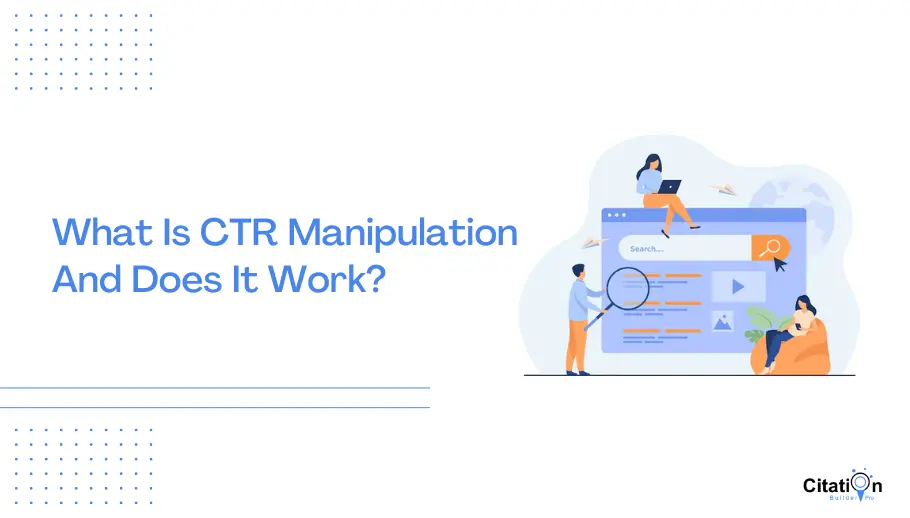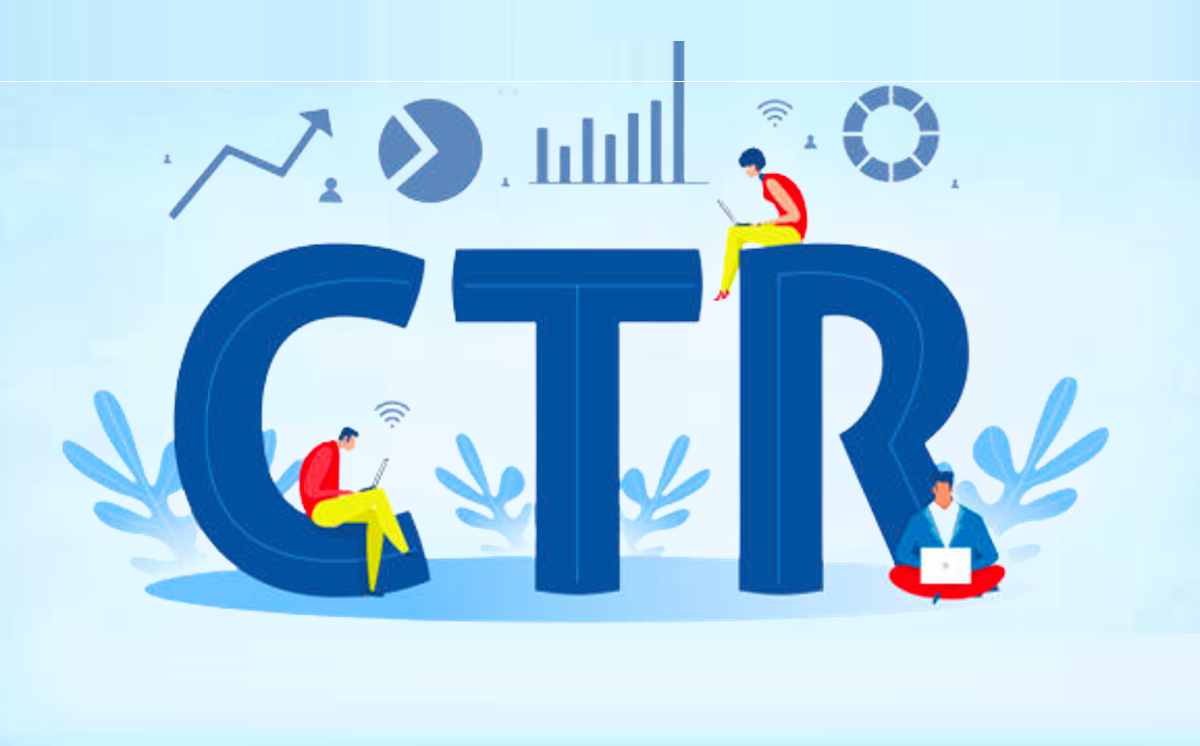The Ultimate Overview to Carrying Out Successful CTR Manipulation Strategies
The Ultimate Overview to Carrying Out Successful CTR Manipulation Strategies
Blog Article
Accomplishing Success With Targeted CTR Control
The optimization of click-through prices (CTR) is a critical venture for brand names aiming to boost their digital visibility and take full advantage of involvement. Targeted CTR control encompasses a series of techniques, from data-driven ad positionings to the growth of compelling content tailored to specific audiences. Comprehending the nuances of individual habits and utilizing methods such as A/B testing can significantly influence efficiency end results. However, the journey to grasping these techniques is complex and requires a recurring commitment to analysis and refinement. The question remains: what details methods will yield one of the most significant outcomes in this dynamic landscape?
Understanding Click-Through Rates
Click-through rates (CTR) function as a crucial metric in digital marketing, showing the effectiveness of on the internet content in driving individual engagement. This statistics is determined by dividing the variety of clicks an advertisement or web link gets by the total variety of impressions, revealed as a percentage (CTR Manipulation Service). A greater CTR shows that the material resonates well with the target audience, motivating them to do something about it
Recognizing CTR is essential for marketing professionals aiming to optimize their projects. Numerous elements affect CTR, consisting of advertisement positioning, design, and the significance of the web content to the target market's passions. As an example, engaging headlines and aesthetically appealing pictures can considerably boost the likelihood of individuals clicking on a web link.
Moreover, the context in which the material is presented plays an important function in establishing CTR. Ads showed at critical times or during relevant events are most likely to catch attention. By examining CTR information, marketers can identify trends and areas for improvement, permitting more targeted strategies. Ultimately, an extensive understanding of CTR encourages marketers to fine-tune their techniques, making certain that electronic projects achieve their desired outcomes efficiently.
Relevance of CTR Adjustment
In the affordable landscape of digital marketing, the adjustment of click-through rates (CTR) has come to be a vital strategy for enhancing campaign efficiency. CTR functions as an essential performance indication, mirroring the performance of online promotions and content in bring in individual engagement. A greater CTR not only indicates better rate of interest yet additionally can lead to improved search engine positions and reduced cost-per-click (CPC) rates, consequently optimizing total advertising budgets.
The value of CTR manipulation lies in its ability to notify online marketers concerning consumer preferences and habits. By assessing CTR information, companies can recognize which components of their campaigns resonate most with their target market. This understanding permits for even more educated decision-making and the allocation of sources to one of the most effective networks.
Additionally, reliable CTR control fosters an affordable advantage. Brands that consistently accomplish greater CTRs can outshine competitors, safeguarding an extra substantial market existence. In a period where consumer interest is short lived, capturing clicks converts directly to enhanced conversions and leads, ultimately driving service growth. Therefore, understanding CTR adjustment is not merely helpful; it is essential for achieving sustained success in electronic marketing initiatives.
Techniques for Targeted CTR
Achieving targeted click-through rates (CTR) needs a critical strategy that encompasses various strategies tailored to specific audience sectors. One reliable strategy is enhancing ad positionings by making use of data analytics to identify high-performing networks. By concentrating efforts on these channels, online marketers can improve exposure and boost interaction.
Another important approach is crafting engaging headings and calls to action (CTAs) A/B screening various variants can expose which combinations resonate most with the target audience, thereby driving greater CTR. Additionally, incorporating aesthetic components such as captivating images or video clips can substantially improve appeal, making web content extra see page interesting and shareable.
Customization likewise plays a vital duty; making use of customer data to develop tailored content can cultivate a feeling of relevance, urging clicks. Leveraging social evidence through endorsements and user-generated material can build trust fund, eventually enhancing CTR.
Studying User Actions
 Recognizing individual habits is crucial for optimizing advertising approaches and improving overall performance. By examining just how customers interact with content, marketing professionals can get beneficial insights into choices, inspirations, and discomfort factors. This knowledge makes it possible for the advancement of even more targeted campaigns that resonate see page with particular audience segments.
Recognizing individual habits is crucial for optimizing advertising approaches and improving overall performance. By examining just how customers interact with content, marketing professionals can get beneficial insights into choices, inspirations, and discomfort factors. This knowledge makes it possible for the advancement of even more targeted campaigns that resonate see page with particular audience segments.To effectively evaluate individual habits, different tools and approaches can be employed. Web analytics platforms offer data on customer interaction metrics such as click-through rates, bounce rates, and time spent on page. Heatmaps and session recordings permit marketers to visualize customer communications, disclosing which i loved this aspects stand out and which may be overlooked.
In addition, customer responses with surveys and feedback forms can supply qualitative understandings, improving the understanding of individual sentiment and satisfaction. Segmenting users based upon demographics, actions, and rate of interests can further improve targeting efforts, tailoring web content to fulfill varied demands.
Eventually, constant analysis of customer habits is essential for adapting advertising and marketing techniques in real-time. As user fads progress, staying in harmony with these modifications makes certain that campaigns remain pertinent and effective, fostering a much deeper connection with the target market. This foundational understanding establishes the phase for the effective application of targeted CTR control strategies.
Determining Success and Adjusting Strategies
Determining success in targeted advertising and marketing projects requires a critical method that incorporates efficiency metrics with recurring evaluation. Trick performance indicators (KPIs) such as click-through prices (CTR), conversion prices, and client procurement costs have to be kept track of continually to evaluate the performance of control techniques. By developing a baseline, marketing professionals can assess modifications in CTR and recognize trends that indicate successful involvement or potential shortcomings.
Consistently evaluating these metrics enables for the prompt adjustment of techniques. If a specific project reveals a substantial decline in CTR, it may signal the requirement for innovative alterations or a reevaluation of targeting criteria. Employing A/B screening can better refine methods by comparing variations of ads or landing pages, supplying understanding right into what reverberates ideal with the target market.
In addition, including qualitative responses via studies or customer interviews can supplement measurable data, providing a detailed sight of audience understanding. Eventually, the capacity to iteratively analyze and fine-tune approaches based upon real-time information cultivates a much more responsive marketing strategy, making certain that projects continue to be lined up with service goals and audience preferences. This flexible technique is critical in attaining continual success in targeted CTR control.
Conclusion
To conclude, targeted CTR control is important for optimizing electronic advertising and marketing efforts. By understanding click-through rates and using tactical techniques, brand names can successfully improve user involvement and drive conversions. Continual analysis of user actions and thorough measurement of efficiency signs facilitate prompt modifications, ensuring placement with consumer choices. Eventually, successful CTR adjustment not just boosts exposure yet also promotes trust fund and integrity, thus adding to continual growth in open markets.
 Targeted CTR manipulation incorporates a range of methods, from data-driven ad positionings to the growth of engaging material tailored to particular audiences.Click-through rates (CTR) serve as a vital statistics in electronic advertising, reflecting the effectiveness of on the internet content in driving user interaction. A higher CTR shows that the web content reverberates well with the target audience, prompting them to take action.
Targeted CTR manipulation incorporates a range of methods, from data-driven ad positionings to the growth of engaging material tailored to particular audiences.Click-through rates (CTR) serve as a vital statistics in electronic advertising, reflecting the effectiveness of on the internet content in driving user interaction. A higher CTR shows that the web content reverberates well with the target audience, prompting them to take action.CTR offers as a key efficiency sign, showing the effectiveness of online advertisements and web content in drawing in individual engagement.In conclusion, targeted CTR adjustment is important for optimizing digital marketing efforts.
Report this page